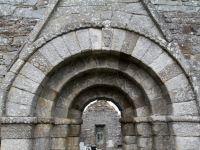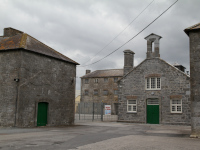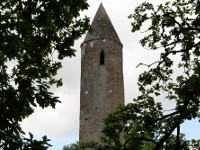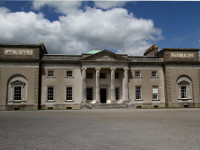
County Laois
County Laois (Irish: Contae Laoise) is situated in south east part of Midlands and was previously known as Queen's County. The name which is now comes from Loígis, a name of medieval irish kingdom existing into the 16th century, which territory was lying partly within the boundaries of a present County Laois. It is mainly flat, low country where forests alternate with bogs and rich pastures. The river Barrow marks almost half of its border, from Slieve Bloom Mountains on the north west, to the border with County Carlow and suburbs of Carlow Town on the south east part of the county. The Slieve Bloom Mountains are great place for cyclists and hill hikers, and offer a wide choice of looped and long distance way-marked walks. The major historical attractions in County Laois are the Emo Court and Gardens - neo classical mansion, surrounded by beautiful gardens and parkland, the Dunamase Castle ("Rock of Dunamase") - the ruins of the Anglo-Norman defensive stronghold from the 12th century and Timahoe Round Tower. County Laois is missed from the itineraries of many visitors what makes its quiet charm.
Interesting places in county Laois

Killeshin Church
Midlands Ireland | County Laois
Killeshin Church (Co. Laois) is located about 5 km north-west of Carlow Town, on the site of an Early Christian monastery founded by St Comdhan in the 5th century. The church was built in the 12th century and has one of the finest Romanesque doorway in Ireland. The doorway has four orders and is made of three kinds of stone: fine-grained brownish-purple sand... more info and photos

Donaghmore Famine Workhouse Museum
Midlands Ireland | County Laois
Donaghmore Famine Workhouse Museum is located in on the road between Borris-in-Ossory and Rathdowney, in Donaghmore, County Laois. It was one of the 130 workhouses built in Ireland during famine times, in mid-19th century (another 33 were established some time later). These institutions were operating until the 1920s as a means of providing relief for extrem... more info and photos

Timahoe Round Tower
Midlands Ireland | County Laois
Timahoe Round Tower is located in the village of Timahoe about 12 km southeast from town of Portlaoise (road R426) in County Laois. The name "Timahoe" comes from "Tigh Mochua", what means House of Mochua (St Mochua was hermit who founded here the first monastic settlement in 7th century). The settlement was raided and the oratory was burned in 919 and again ... more info and photos

Emo Court and Gardens
Midlands Ireland | County Laois
Emo Court it's neo- classical mansion surrounded by beautiful gardens and parkland located near Portlaoise in County Laois. House was designed by famous architect James Gandon (architect of "Four Courts", "Custom House" and "King's Inns" in Dublin) in 1790 for John Dawson, the first Earl of Portarlington. When Dawson-Damer family have left the residency in 1... more info and photos

Dunamase Castle
Midlands Ireland | County Laois
Dunamase Castle or "Rock of Dunamase" (county Laois) - the ruins of the Anglo-Norman defensive stronghold from the 12th century built on the site of early-medieval fort "Dun Masc". Probably was built by Meyler Fitzhenry, to whom they were granted the lands of the county laois after the Norman invasion(there is also a hypothesis that was built by William Mars... more info and photos



















